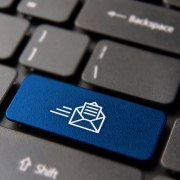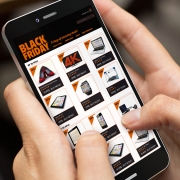Email is a huge part of most companies’ marketing mix but many brands are still swinging and missing when it comes to delivering great campaigns. Email is an integral part of many marketing campaigns. We use it every single day. The first thing I do when I sit down at my desk in the morning is check my email and it’s also the last thing I do before I leave. It’s the one thing that stays up on my screen for the whole day.
When we’re dealing with something that impacts so many people day to day, we can’t afford to be getting it wrong. So, what are the challenges of email and how do we overcome them?
1. Getting noticed in peoples inboxes
-
Subject line testing
Every data list is different, so there’s no magic solution to email subject lines. The best way to achieve results is to test subject lines through A/B testing and then roll out to the rest of your list. For example, send 20% of your emails to one subject line and 20% to another. Leave it 24 hours, assess the results and send the winning subject line to the rest of your list. Over time you’ll get a sense of what engages your audience and what bores them to tears. -
Do something a little different
Emojis in email subject lines can work really well when used cleverly and sparingly. -
Know when to send
Different databases respond to different send times. At Enabler, we find that 9am, 11am and 2pm work really well as send times for B2B. This enables you to catch people as they start work, on their morning coffee break and during the post-lunch slump. Again, the way to find out what works best for you is testing. Split-send to your list at different times of day and compare the results. -
Know how often to send
No-one wants to be spammed with emails after they’ve signed up for a newsletter. With the introduction of Gmail’s inbox tab system, which separates everything into primary, promotions, social and updates you don’t want to be stuck in the junk section! A way to deal with this is to ask your users what they want; find out what they’re interested in and send them that.
2. Ensure your emails are rendering correctly
There is nothing worse in the world of email than opening up your inbox to find an email that hasn’t rendered correctly. Maybe you’re missing half an image, maybe you can’t see images at all. Maybe you’re missing half a call to action button on your Outlook client because a lazy developer didn’t run the email through an email testing client before sending it to your inbox. The key to making sure you get it right is to test on each email client before hitting the send button. I prefer Litmus because it allows you to email your HTML directly to the program and shows you how your email will render on both mobile clients and desktop clients. It also shows you all the versions of the clients rather than just the latest ones. Top tip: Outlook 2007 and 2010 basically support nothing.
3. Keeping up with trends
-
Mobile vs desktop
Know what percentage of your list are opening your emails on mobile. I generally work to the rule that if it’s more than 10% you should definitely be using responsive design and if it’s anything over 2% you should definitely be at least considering using it. We’re a society of mobile users, and that’s only going to grow. With that in mind, email marketers can’t afford to delay making their content accessible to mobile users. -
Dynamic content
Gone are the days of building 30 emails, one for every category you have in your database. It’s all about building one email, and using conditional content conditions to ensure each user sees what you want them to see upon opening your email. All decent ESPs will have this functionality built in, so what are you waiting for? -
Rich media
Knowing how to make your emails stand out is more important than ever. Emails can drive sales and brand awareness as well as provide platforms for event attendance. Explore GIFS, Video, Twitter feeds, Social sharing and more to support your email campaigns. With technology developing so rapidly, it’s important to be creative to ensure you stay on top of your game. -
Be practical
This is a big one, there’s no point sending great content to your database if they won’t be able to see it, and the email therefore loses all meaning to them. It’s imperative to know, for example, that Outlook won’t support your animated GIF and will freeze it on the first frame. Or that Gmail won’t display emojis in your subject line and show them as little boxes instead. Make sure you do your research and find out what will and won’t work, before you get creative.
4. Managing your data correctly
-
You can’t have good email without good data
Understanding what you can do with your data is every bit as important as keeping up with the latest front end coding trends. You can segment your data by age, region, gender or anything you know about them – all you need is the right tools to collect that data and the right tools to use it to code a great email. Never miss an opportunity for data capture and always employ the Pokémon tag line ‘Gotta catch ‘em all’. (‘em all being the bits of data). -
Know what to do with that data within an email.
Personalisation is key but get it right – no one wants to see ‘Hi First Name’ at the start of an email. There’s no point personalising if your data isn’t correct. I’ve seen brands put the wrong merge code into an email so the policy renewal ID was swapped with the recipient first name. This gave the effect that the company was referring to one of its customers as a number, not a name. -
Be creative
You’d be surprised how many people actually miss this out of campaigns. It seems like common sense, until you sit down in front of a computer and start trying to plan, at which point your brain might give you… nothing. So how do we get around those creative email mind blocks? First work out what you are trying to achieve. Do you want people to buy from your site?Do you want to increase brand awareness? Do you want to encourage people to enter a competition or play a game or simply visit your site?
Once you’ve worked this out you can start working out how you’re going to achieve it. Don’t be scared of doing some competitor research to get you started. Most importantly, have fun – email is great, you should be enjoying yourself!
Is email a dying channel?
In short, no! Email has been around since 1971 when Ray Tomlinson sent the first one on the ARPANET system. It was the first system that was able to send mail between users on different hosts connected to the ARPANET. Since then we have seen the evolution of email as a channel to the point where many of the functionalities mirror what you can do with websites – which is remarkable when you think about it. Considering everything you code into email has to sit within tables… within tables – the amount it has and continues to achieve is outstanding.
Think about how many other internet based fads email has remained a constant throughout. Email saw the birth of MSN, Myspace, Facebook, Twitter, YouTube, Mobile apps… and it’s still going, still developing, still adapting. There are conferences all around the world dedicated purely to email and how we can keep developing email.
Online sales have skyrocketed in the last few years and now remain at a consistent high. A huge part of what drives these online sales is email. Email drives people to websites. Email makes sales. Email is awesome.














